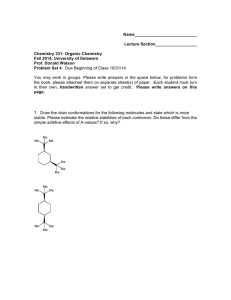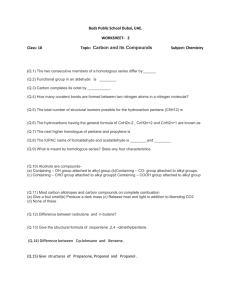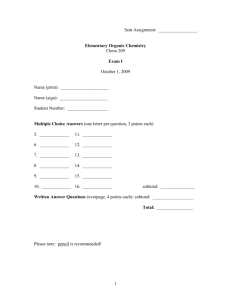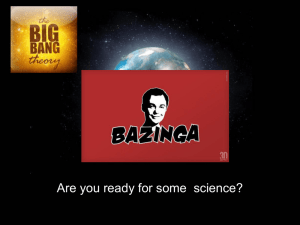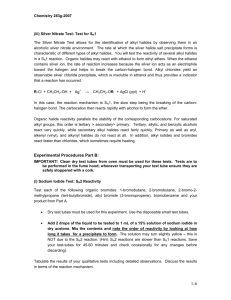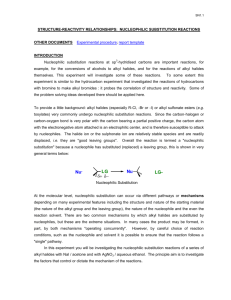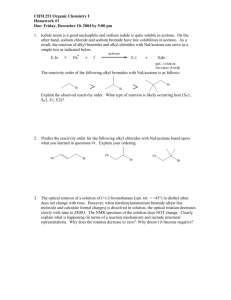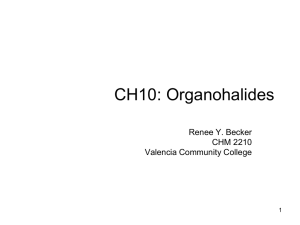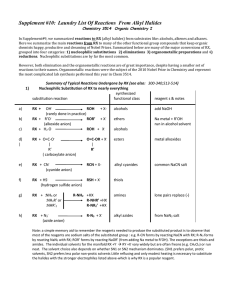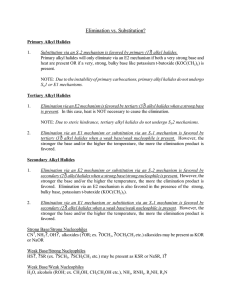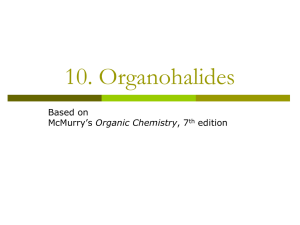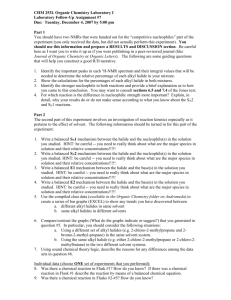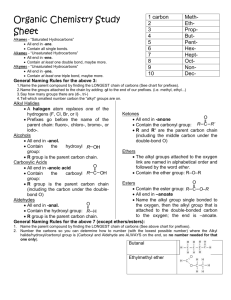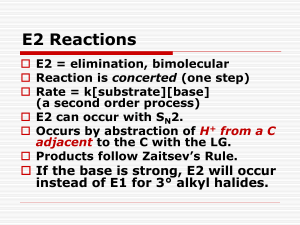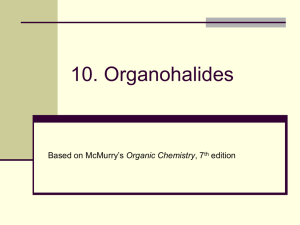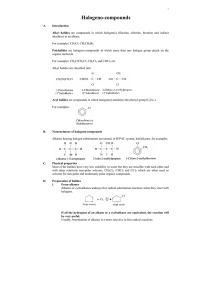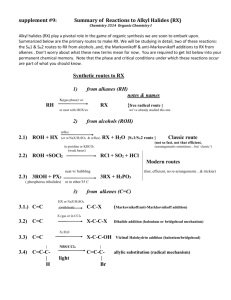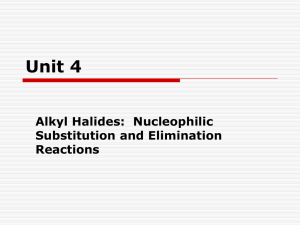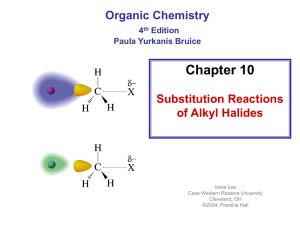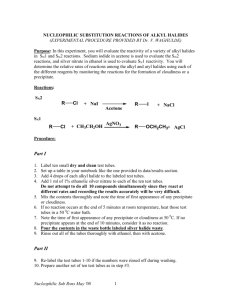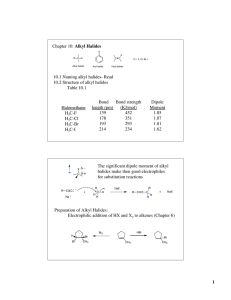Ch. 10 & 11 Topics - Iowa State University
advertisement
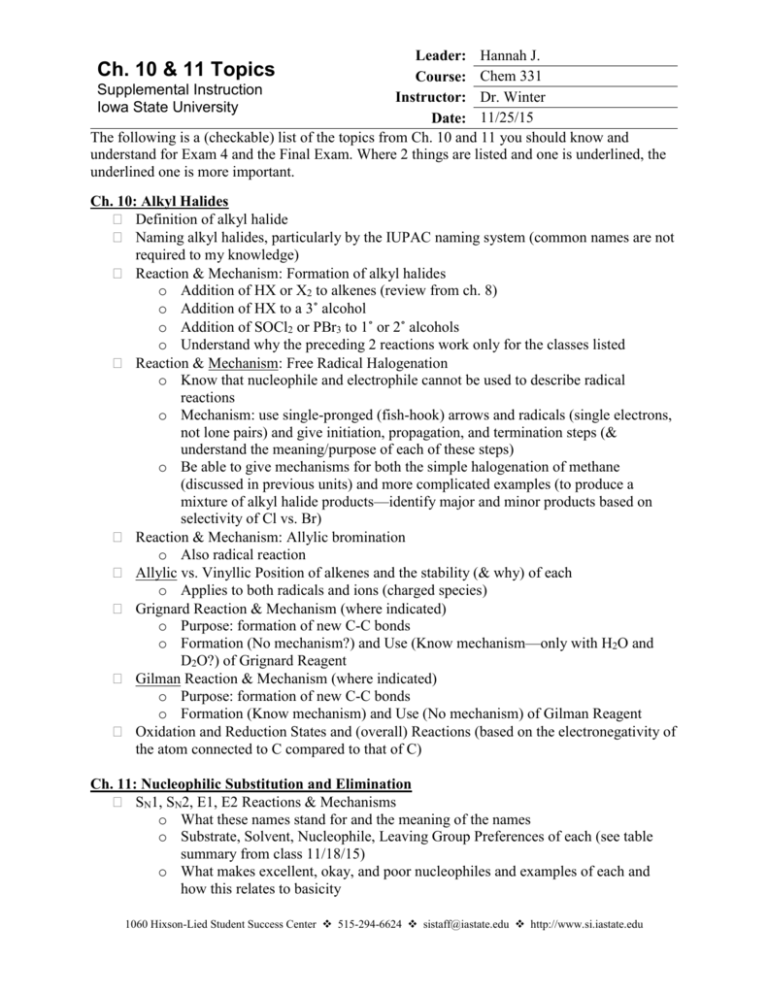
Leader: Hannah J. Course: Chem 331 Supplemental Instruction Instructor: Dr. Winter Iowa State University Date: 11/25/15 The following is a (checkable) list of the topics from Ch. 10 and 11 you should know and understand for Exam 4 and the Final Exam. Where 2 things are listed and one is underlined, the underlined one is more important. Ch. 10 & 11 Topics Ch. 10: Alkyl Halides Definition of alkyl halide Naming alkyl halides, particularly by the IUPAC naming system (common names are not required to my knowledge) Reaction & Mechanism: Formation of alkyl halides o Addition of HX or X2 to alkenes (review from ch. 8) o Addition of HX to a 3˚ alcohol o Addition of SOCl2 or PBr3 to 1˚ or 2˚ alcohols o Understand why the preceding 2 reactions work only for the classes listed Reaction & Mechanism: Free Radical Halogenation o Know that nucleophile and electrophile cannot be used to describe radical reactions o Mechanism: use single-pronged (fish-hook) arrows and radicals (single electrons, not lone pairs) and give initiation, propagation, and termination steps (& understand the meaning/purpose of each of these steps) o Be able to give mechanisms for both the simple halogenation of methane (discussed in previous units) and more complicated examples (to produce a mixture of alkyl halide products—identify major and minor products based on selectivity of Cl vs. Br) Reaction & Mechanism: Allylic bromination o Also radical reaction Allylic vs. Vinyllic Position of alkenes and the stability (& why) of each o Applies to both radicals and ions (charged species) Grignard Reaction & Mechanism (where indicated) o Purpose: formation of new C-C bonds o Formation (No mechanism?) and Use (Know mechanism—only with H2O and D2O?) of Grignard Reagent Gilman Reaction & Mechanism (where indicated) o Purpose: formation of new C-C bonds o Formation (Know mechanism) and Use (No mechanism) of Gilman Reagent Oxidation and Reduction States and (overall) Reactions (based on the electronegativity of the atom connected to C compared to that of C) Ch. 11: Nucleophilic Substitution and Elimination SN1, SN2, E1, E2 Reactions & Mechanisms o What these names stand for and the meaning of the names o Substrate, Solvent, Nucleophile, Leaving Group Preferences of each (see table summary from class 11/18/15) o What makes excellent, okay, and poor nucleophiles and examples of each and how this relates to basicity 1060 Hixson-Lied Student Success Center 515-294-6624 sistaff@iastate.edu http://www.si.iastate.edu o Reaction to transform a poor leaving group into an excellent one (sometimes tosylate) for each class of substrate and desired stereochemistry of the product o Stereochemistry (inversion, racemic mixture, or loss of stereochemistry) of each and which mechanisms are concerted & stepwise (and how these qualities are related) o Rate law of each reaction and how it relates to substrate, nucleophile (& leaving group) preferences o Energy diagram of each reaction type, particularly identification of the ratelimiting step o Zaitsev’s Rule as it relates to E1 and E2 elimination reactions
